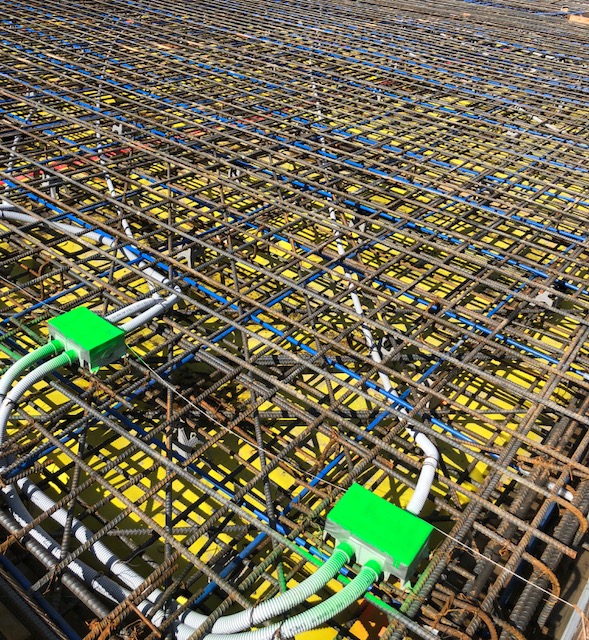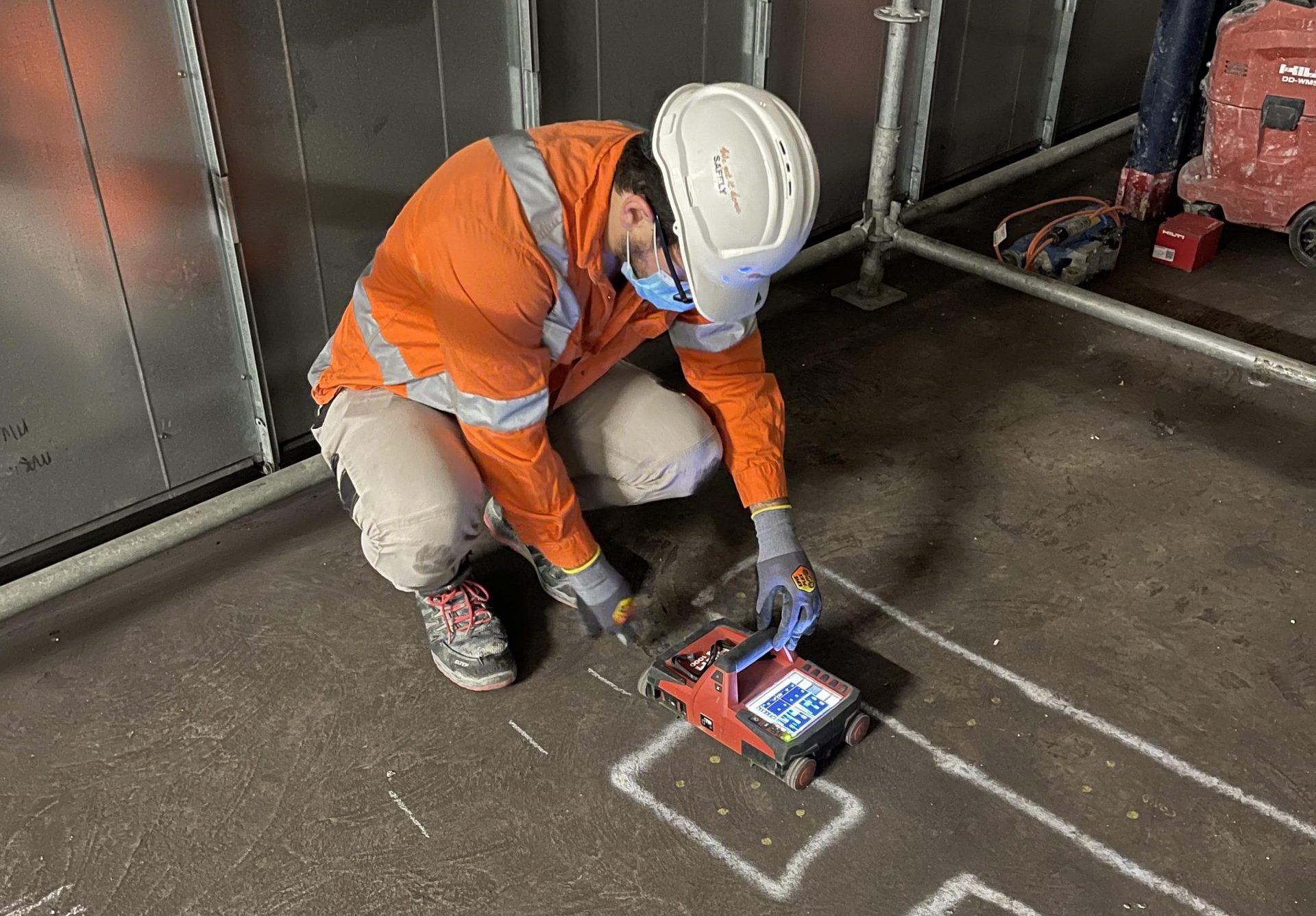Boost Construction Safety And Security with Specialist Concrete Scanning
Wiki Article
Unveil the Transformative Power of Concrete Scanning in Taking Full Advantage Of Efficiency and Safety And Security
Concrete scanning has arised as an important device in the building market, supplying unequaled benefits in enhancing project effectiveness and guaranteeing safety criteria. The transformative power of concrete scanning exists in its capability to give real-time information and in-depth insights, changing exactly how jobs are planned and performed.Relevance of Concrete Scanning
Guaranteeing the structural honesty and safety and security of building and construction projects begins with the important action of carrying out complete concrete scanning. Concrete scanning is a non-destructive technique made use of to discover and map subsurface aspects within concrete structures. This process is essential in identifying possible hazards, such as rebar, post-tension cable televisions, and channels, that might be hidden within the concrete. By using advanced innovations like ground-penetrating radar (GPR) and electro-magnetic induction, building and construction groups can properly situate these aspects without creating any type of damages to the structure.The relevance of concrete scanning can not be overemphasized, as it plays an important function in preventing mishaps, minimizing job hold-ups, and making sure the long-term resilience of the construction. By recognizing potential risks before the construction phase begins, building contractors can carry out proper security measures and make notified choices regarding the design and execution of the task. Additionally, concrete scanning assists in optimizing job timelines and budget plan by avoiding unexpected costs and delays that might emerge as a result of unpredicted obstructions within the concrete. Inevitably, investing in detailed concrete scanning is an aggressive strategy that enhances both efficiency and safety in construction jobs.
Just How Concrete Scanning Works
Concrete scanning runs as a crucial device in building and construction tasks by employing sophisticated modern technologies to find and map subsurface elements without triggering architectural damages. Ground Permeating Radar (GPR) and Electromagnetic Induction (EMI) are two primary methods utilized in concrete scanning. GPR jobs by giving off high-frequency radar pulses into the surface, which recover when they run into subsurface items or spaces. The time taken for the signal to return shows the depth and location of the things. EMI, on the various other hand, uses electromagnetic fields to identify variances in material structures, such as identifying rebar or conduits within concrete structures.Throughout the scanning procedure, the information gathered is analyzed in real-time, permitting immediate recognition of prospective hazards or barriers underneath the surface area. By utilizing these advanced technologies, concrete scanning substantially decreases the threat of pricey problems and injuries on building and construction sites.
Benefits of Concrete Scanning
One of the main benefits of concrete scanning is the ability to identify and find ingrained objects such as rebar, post-tension wires, and channels precisely. Concrete blog here scanning helps in planning and designing much more successfully, as it supplies precise information regarding the area and deepness of architectural elements.
Instance Research Studies: Concrete Scanning Success

In one more situation, a building company made use of 3D concrete scanning to evaluate the problem old concrete structures in a historical structure. The comprehensive scans supplied beneficial insights right into the level of deterioration and helped prioritize maintenance initiatives successfully. By proactively over at this website resolving areas of worry recognized through scanning, the firm had the ability to prolong the lifespan of the structure and make certain occupant security.
These instance research studies highlight the transformative power of concrete scanning in improving efficiency, accuracy, and security in construction jobs.
Implementing Concrete Scanning in Projects
Implementing advanced scanning technologies during construction jobs has actually ended up being significantly essential for enhancing precision and safety and security. By integrating concrete scanning right into task planning and implementation, building and construction teams can determine possible dangers, such as rebar or post-tension cords, hidden within concrete frameworks. This aggressive method decreases the threat of accidents, hold-ups, and expensive rework, inevitably resulting in much more effective project timelines and spending plans.To carry out concrete scanning properly, task supervisors must work together closely with knowledgeable scanning professionals to establish the most ideal scanning techniques for the certain project needs. Involving scanning professionals from the early phases of a project makes it possible for the team to create thorough scanning strategies that address crucial areas of worry and ensure complete data collection.
Moreover, integrating concrete scanning into normal project workflows can streamline decision-making processes, as real-time scan information provides prompt understandings right into the condition of concrete frameworks - Concrete Scanning. This data-driven approach facilitates informed analytical and makes it possible for groups to make modifications quickly, cultivating a culture of efficiency and safety throughout the task lifecycle

Conclusion
To conclude, concrete scanning plays an essential duty in boosting performance and security in building jobs. By using innovative modern technology to discover and map out underlying structures within concrete, this procedure helps to avoid pricey blunders, make sure architectural honesty, and minimize risks on website. With the ability to reveal surprise aspects and supply accurate information, concrete scanning confirms to be an important device for maximizing task results and optimizing overall success.Concrete scanning is a non-destructive technique used to detect and map subsurface elements within concrete structures. Additionally, concrete scanning assists in maximizing project timelines and budget by staying clear of unexpected costs and delays that may arise due to unexpected obstructions within the concrete. One noteworthy case research includes a massive improvement task where concrete scanning played a crucial function in ensuring task success.In another situation, a construction firm used 3D concrete scanning to examine the condition of maturing concrete frameworks in a historic structure. By incorporating concrete scanning right into project planning and execution, building teams can recognize possible risks, such as rebar or post-tension wires, hidden within concrete structures.
Report this wiki page